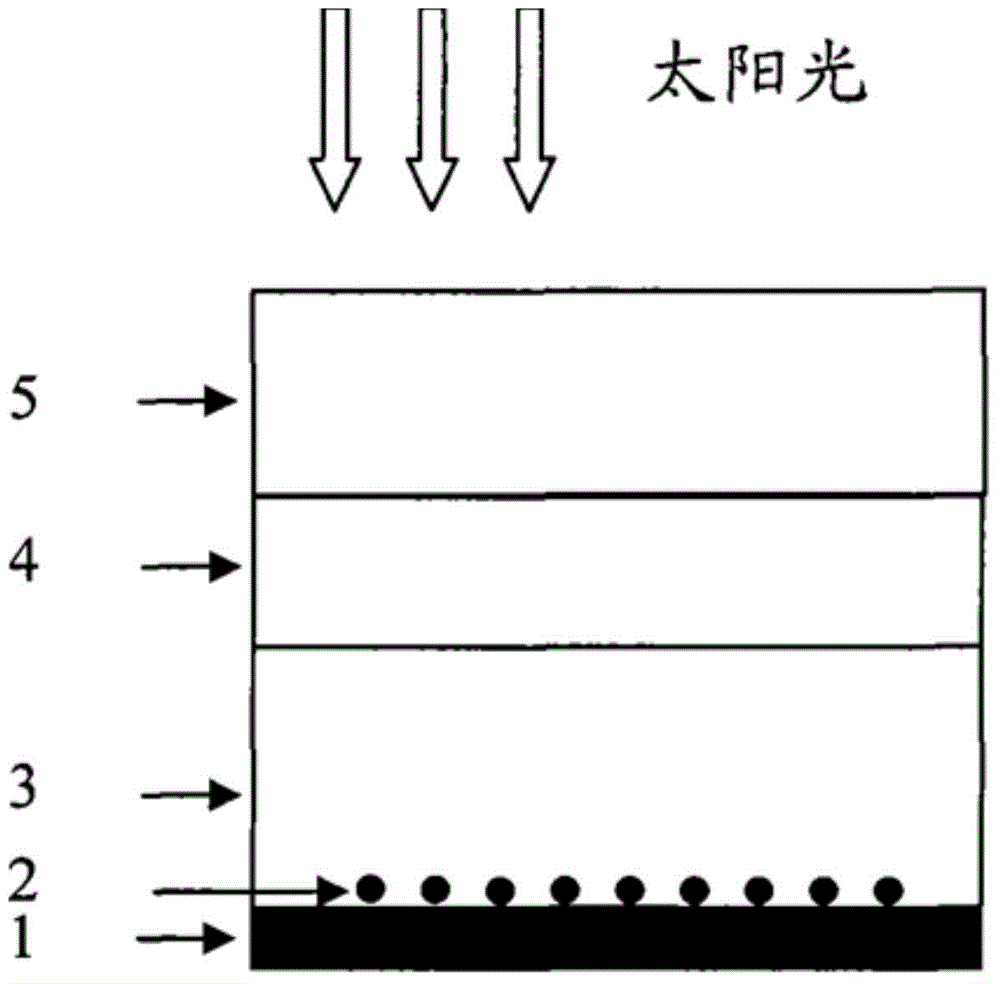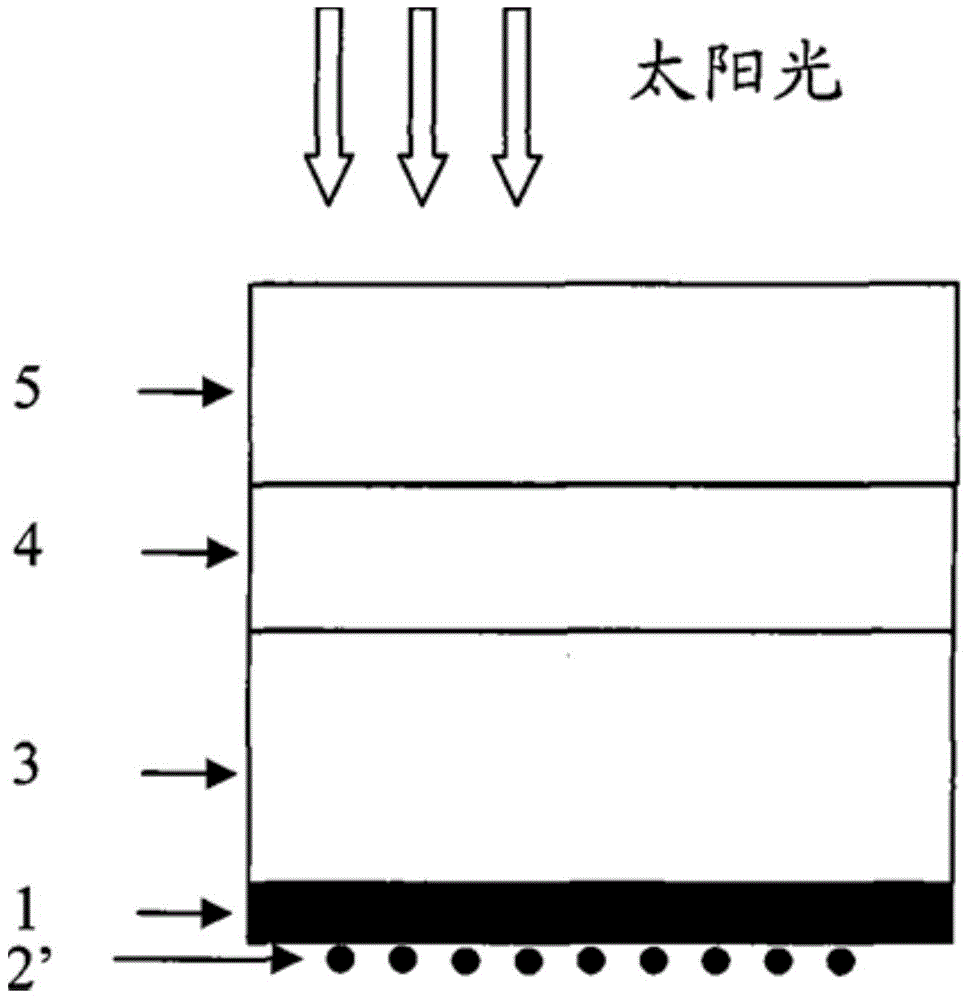Organic solar cell and manufacturing method thereof
A solar cell and organic technology, applied in the field of solar cells, can solve the problems of increasing the complexity of organic solar cell devices and demanding heterojunction growth control, and achieve the effects of improving energy conversion efficiency, high production efficiency, and improving efficiency
- Summary
- Abstract
- Description
- Claims
- Application Information
AI Technical Summary
Problems solved by technology
Method used
Image
Examples
Embodiment approach
[0036] see figure 1 , shows a schematic structural view of the first embodiment of the organic solar cell according to the embodiment of the present invention. In this embodiment, the organic solar cell includes a transparent insulating substrate 5 , and a transparent anode electrode layer 4 , a photosensitive layer 3 , a metal nanoparticle layer 2 and a cathode electrode layer 1 sequentially stacked on the transparent insulating substrate 5 . Since the work function value of the metal nanoparticles in the metal nanoparticle layer 2 is lower than that of the cathode electrode layer 1, the cathode electrode layer 1 is chemically stable and difficult to be oxidized, while the metal nanoparticles in the metal nanoparticle layer are chemically stable. It is lively and easily oxidized. In this embodiment, the metal nanoparticle layer 2 is arranged between the photosensitive layer 3 and the cathode electrode layer 1, that is, the metal nanoparticle layer 2 is stacked and formed on t...
PUM
| Property | Measurement | Unit |
|---|---|---|
| thickness | aaaaa | aaaaa |
| thickness | aaaaa | aaaaa |
| thickness | aaaaa | aaaaa |
Abstract
Description
Claims
Application Information
 Login to View More
Login to View More - R&D
- Intellectual Property
- Life Sciences
- Materials
- Tech Scout
- Unparalleled Data Quality
- Higher Quality Content
- 60% Fewer Hallucinations
Browse by: Latest US Patents, China's latest patents, Technical Efficacy Thesaurus, Application Domain, Technology Topic, Popular Technical Reports.
© 2025 PatSnap. All rights reserved.Legal|Privacy policy|Modern Slavery Act Transparency Statement|Sitemap|About US| Contact US: help@patsnap.com



